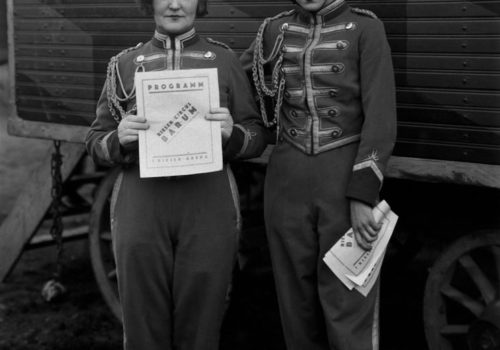In the 1920s, August Sander conceived of The People of the 20th Century, a seven-volume series that would encapsulate the face of the times, and to this project he dedicated the better part of his life. Focused on creating a general cross-section of the German population, Sander’s seven groups included “The Farmer,” “The Skilled Tradesman,” “The Woman,” “Classes and Professions,” “The Artists,” “The City,” and on the topic of age, illness, and death, “The Last People.”
April 20 marks the 50th anniversary of Sander’s death, and to honor the artist’s legacy, Schirmer Mosel presents a single volume of the seven-volume edition. With 619 duotone plates, People of the 20th Century is a comprehensive portrait of a people at a time and a place that no artists before or since has created. Taken as a whole, Sander gives us a distinctly German take on his native land, a look that is organized into a social, economic, political, and cultural history of an entire epoch.
Sander’s gift was being able to see the relationship between the individual and the group, the way in which they informed and shaped identity to maximize result. His ability to understand the intuitive purpose of people as characters in their own right, and of a larger community that serve the group, enhances Sander’s ability to render context in clear but understated effect. The result is one that is effortless, as though the fingerprints of the photographer never appear on the print, as though each and every subject was willing to meet Sander in a space where the formalities of the portrait were mutually agreed to be maintained.
This mutuality reflects Sander’s role as photographer, as both part of the group and set apart from it, as observer and archivist. It unconsciously encourages the subjects to present themselves for posterity, not just as who they are but as their ideal selves, so that when we look back we see an attitude that is carried on by young and old, but whatever profession, trade, or skill. It is this sense of self the camera itself bestows, for Sander imbues his subjects with a dignity that recall the tradition of painted portraits for the gentry.
The People of the 20th Century illustrates the democratic nature of the photograph, of its ability to become a source for the preservation of all wo/mankind as we are in a given time and place. That is the beauty of a book of this magnitude. It commands respect. It cannot simply be paged through mindlessly, but rather with a patience befitting the time itself. An era that began between the wars as Germany made its way into the modern age under the Weimar Republic. We look at a people, the future of whom no one could have ever foretold, and we see them as they see themselves, a proud and noble, heirs to a history that would soon unfold and change the destiny for too many lives to name. What remains is what is preserved, what we keep to tell of who, what, where, and when, the hows and whys we may never know.
http://www.artbook.com/9783829606448.html
http://missrosen.wordpress.com
















